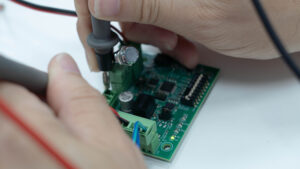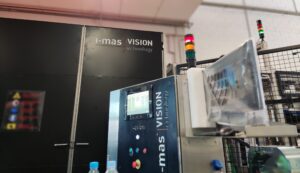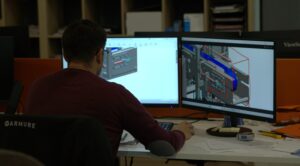Before manufacturing a part or product, it is possible – and advisable – to validate its design using advanced digital tools that make it possible to detect errors, optimize resources and anticipate technical or functional problems. This early validation not only saves time and costs in the prototyping phase, but also improves the final quality of the product.
In this article we explain how simulations, renderings and augmented reality can be used to validate a design without the need to manufacture it, with practical examples applicable in industrial sectors and in any product design and development process.
Simulations in product design: performance, strength and actual behavior
Digital simulations make it possible to anticipate how a product will behave before it is manufactured. Using tools such as SolidWorks Simulation, Ansys or Autodesk Inventor, design teams can evaluate aspects such as mechanical strength, thermal response, vibration or fluid behavior. This is essential to ensure that the design is robust and functional in real-world conditions.
In addition, this type of virtual validation makes it possible to detect critical areas or overloads, optimize thicknesses, reduce weight and minimize material usage. Thanks to the parametric approach, it is also possible to explore different product configurations without the need to manufacture multiple physical prototypes, resulting in significant cost and schedule savings.
Renderings for design validation and clear communication
Rendering makes it possible to visualize the final product with a high level of realism, even before it physically exists. Tools such as KeyShot, Blender or the graphics engines integrated in CAD software help to generate detailed images where materials, textures, colors and shapes are accurately represented.
These renderings are useful to validate both aesthetic and functional aspects of the design. They can reveal assembly errors, geometric interferences or simply visual inconsistencies that are not easily detected in technical modeling. They also facilitate communication between design teams, marketing, customers and investors, especially in projects where a physical prototype has not yet been produced.
Augmented reality in virtual prototyping
Augmented reality (AR) opens up a new dimension in product validation by making it possible to visualize 3D models superimposed on the physical environment using smartphones, tablets or specialized glasses. This technology is particularly useful for assessing the integration of the product in its real environment: for example, checking whether a device fits correctly into a production line, validating its ergonomics in a workstation or analyzing its proportion and visual presence in space.
With tools such as AR Viewer, Sketchfab or native functions of some CAD software, AR-compatible files can be easily prepared. This functionality expands the possibilities of virtual prototyping and enables faster decisions, reduced errors and a better understanding of the impact of the design in its final context.
Advantages of validating a non-manufactured product design
Incorporating these technologies into the product design flow allows:
- Reduce the number of physical iterations and accelerate development.
- Minimize costly errors in advanced phases of the project.
- Better communicate design decisions to other departments or stakeholders.
- Generate visual and technical documentation from very early stages.
In today’s context of tight deadlines and limited resources, validating without manufacturing has become an essential practice for product design companies and R&D teams.
However, although these digital tools provide rapid, visual and technical validation, physical prototyping remains an irreplaceable phase in many projects. Only with a tangible prototype is it possible to test the actual fit of components, evaluate long-term endurance or verify ergonomics and user experience under real conditions.
How we apply it at I-MAS: more efficient product design and development
At I-MAS we apply structural simulations, photorealistic renderings and augmented reality as a regular part of our design and product development processes. This allows us to make better informed decisions, avoid mistakes before they reach the factory and offer a more fluid communication with our customers.
In any case, we understand this duality as a strength: we validate digitally to reduce risks, but we always reserve a space to contrast the material reality of the design.
Whether to validate a prototype, present a commercial proposal or ensure compatibility with an assembly environment, these tools help us anticipate and improve project efficiency.
At I-MAS, we have been helping innovative startups and companies turn ideas into successful products for more than two decades. Our comprehensive approach to product design and development covers all phases of the process: from initial conceptualization, technical and functional design, rapid prototyping and validation, to readiness for manufacturing.
If you are interested in learning more about our services or have a project in mind, do not hesitate to contact us!



